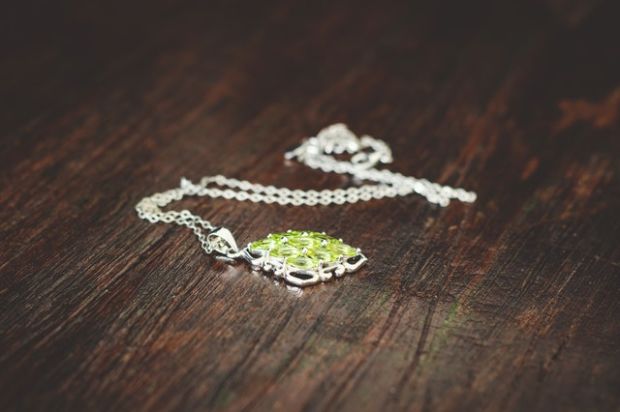Free Delivery When You spend £100+
5 Tips to care for your Sterling Silver Jewellery

The most common question we get asked is how to care for Sterling Silver Jewellery, such as Chains, Bracelets, Earrings, Pendants, Anklets, Nose studs. Our quick tips below apply to all Sterling Silver Jewellery, which we hope you’ll find useful.
In general, most concerns we hear when caring for Sterling Silver, is the colour. Genuine Sterling Silver jewellery is a precious metal and doesn’t “corrode” or “rust”. These are associated terms for metals which structurally disintegrate leaving unrepairable. Sterling Silver does not behave like this and any affects of discolouration are in most cases temporary.
Most of us want to ensure that our Sterling Silver Jewellery is as shiny as the first day we wore it and to avoid any sort of unsightly discolouration that tends to occur with Sterling Silver. This discolouration, notably black, is referred to as Tarnish, and sometimes other colours such as green, is referred to as Patina. You’ll notice Patina on 2p coins, which can sometimes go green since they are made using copper and is the result of some reaction with the copper.
As with many things, prevention is better than cure– and jewellery is no exception to that rule.
Summary
It’s important firstly to have a brief awareness of what Sterling Silver Jewellery is as one of the most popular types of metal used in fine jewellery. If you’ve not already read our detailed post about Silver And Sterling Silver, you can read it by clicking here, where we describe how all Sterling Silver jewellery, regardless of purchase place contains a small amount of Copper. It’s important to mention, this because Copper is most cases the part of Sterling Silver which reacts to produce the patina. Silver itself whilst largely and unreactive metal, may react to certain chemicals. Silver itself can suffer from a black colour, when Silver comes into prolonged contact with sulphur. Once Silver reacts with Sulphur and becomes silver sulphide – the result is the darker black colour.
Now that we know that we can better look at what we need to do, in ensuring we keep an eye out for the reactants to Copper and Silver.
Here they are:
Avoid wearing your Sterling Silver Jewellery when showering or Swimming or when exercising
It’s important to avoid wearing when
showering or swimming owing to the different chemicals contained within the soaps and shower gels we use. Within
most swimming pool, chlorine is added to hygiene but chlorine can also be unfriendly towards your Sterling
Silver Jewellery. All these chemicals, being “liquidy” means it can also reach into the small crevices in
between your jewellery and as it becomes more difficult to dry properly in those places, it settles and may
start to react and then oxidise the metal.
When exercising, we start to perspire and this can contain trace
amounts of natural acids that can settle on the layer of jewellery and sit there.
Avoid prolonged contact with water and keep your Sterling Silver Jewellery as dry as possible
Allowing water to come into contact with you Sterling Silver Jewellery is not going to cause tarnish. But, you should ensure to dry the Silver as soon as you can and not let it dry out whilst water is still on the surface. This is because water contains oxygen and if left to settle on the surface of your Sterling Silver Jewellery for some time, it will allow the oxygen to react with the copper and oxidise causing discolouration.
Remove your jewellery before spraying aftershaves/perfumes, lotions or cremes
Again, there are many different chemicals within beauty products or cremes that your jewellery can be submerged and coated with as you spray or massage any products with your jewellery still on. It’s best to wait for such products to fully dry and settle so it has less chance to stick to your jewellery and react. It’s a good idea to remember to make jewellery the last thing you put on with your outfit, but also the first thing you can take off at the end of the day.
Regularly wipe your jewellery if wearing daily
It’s a good idea to wipe your jewellery with a soft cloth. It needn’t be a silver polishing cloth if you don’t have one. Silver polish cloths contain some small cleaning chemicals within them that brighten up the silver. But a soft cloth will do great just to help remove anything that may have stuck to the surface of your Sterling Silver Jewellery. It will also ensure that your silver will maintain it’s colour for longer. Depending on whether you’re wearing your jewellery for an occasion or you wear it daily, we often forget that during these times our skin may perspire and our natural body oils have some level of skin acidity. If this happens then it’s more likely that that these oils will sit on the surface of the silver and slowly react. Regularly wiping the surface with a soft cloth that is kind to the silver, will keep the surface clean.
Store your jewellery properly when you're not wearing it
When you’re not wearing your jewellery, it’s best to wipe it with a soft cloth and store it in a airtight bag, out of sunlight and preferably somewhere not too warm. If you have an airtight bag that is dark – even better. Keeping it in an air tight bag ensures that the Sterling Silver doesn’t react with any contaminants that are in the air or around where you store it.
Overall when you’re looking at storing your Sterling Silver Jewellery “properly”, you’re aiming to do two things:
1) prepare it before it is stored and;
2) actual storing.
Preparing your jewellery before you store it essentially means your Sterling Silver is dry and free from any chemicals, cremes or lotions and has been wiped with a soft cloth. The reason for this is simply that if you then store your item in a bag which is air tight and let’s say it is wet with just ordinary water, it creates an environment whereby the water can’t escape and the oxygen in the water will react with the copper. If the bag was left open the moisture would be able to escape with any heat.
There also are many products out there that assist with storage such as small stamp sized paper tabs. These tabs contain some chemical agent so that when Sterling Silver jewellery is placed with this inside the bag, it prevents your jewellery from tarnishing. But the only down side with this is that the jewellery has to be tarnish-free first, it won’t remove tarnish already on there.
There are also small paper Silica gel packets, which you’ll often see accompanied with packaging with trainers or other goods. The silica gel packet contains small beads inside and will drawn in any moisture from around its proximity – thereby ensuring a dry environment. I’ve often witnessed watchmakers use such packets by placing with a watch in a grip seal bag to ensure moisture doesn’t get into a watch whist the watch movement has been taken from the case and is being repaired.
Sterling Silver Jewellery with gold or Rhodium Plating
If you own Sterling Silver Jewellery and it contains additional plating on top of it such as Gold plating, whether 9ct, 14ct, 18ct or more or with Rhodium plating – then you can follow the above advice, except instead of wiping with a Sterling Silver Jewellery cloth we’d recommend to lightly wipe with a gold cloth – which will contain the correct chemicals specific to gold. Again, it needn’t be a specialist cloth for regular wiping to quickly remove debris or moisture- and you can use a soft cotton cloth too.
Don’t forget – Sterling Silver is a precious metal and these luxurious metals just need a little care once in a while and will lovingly provide you results just as much as they receive!












